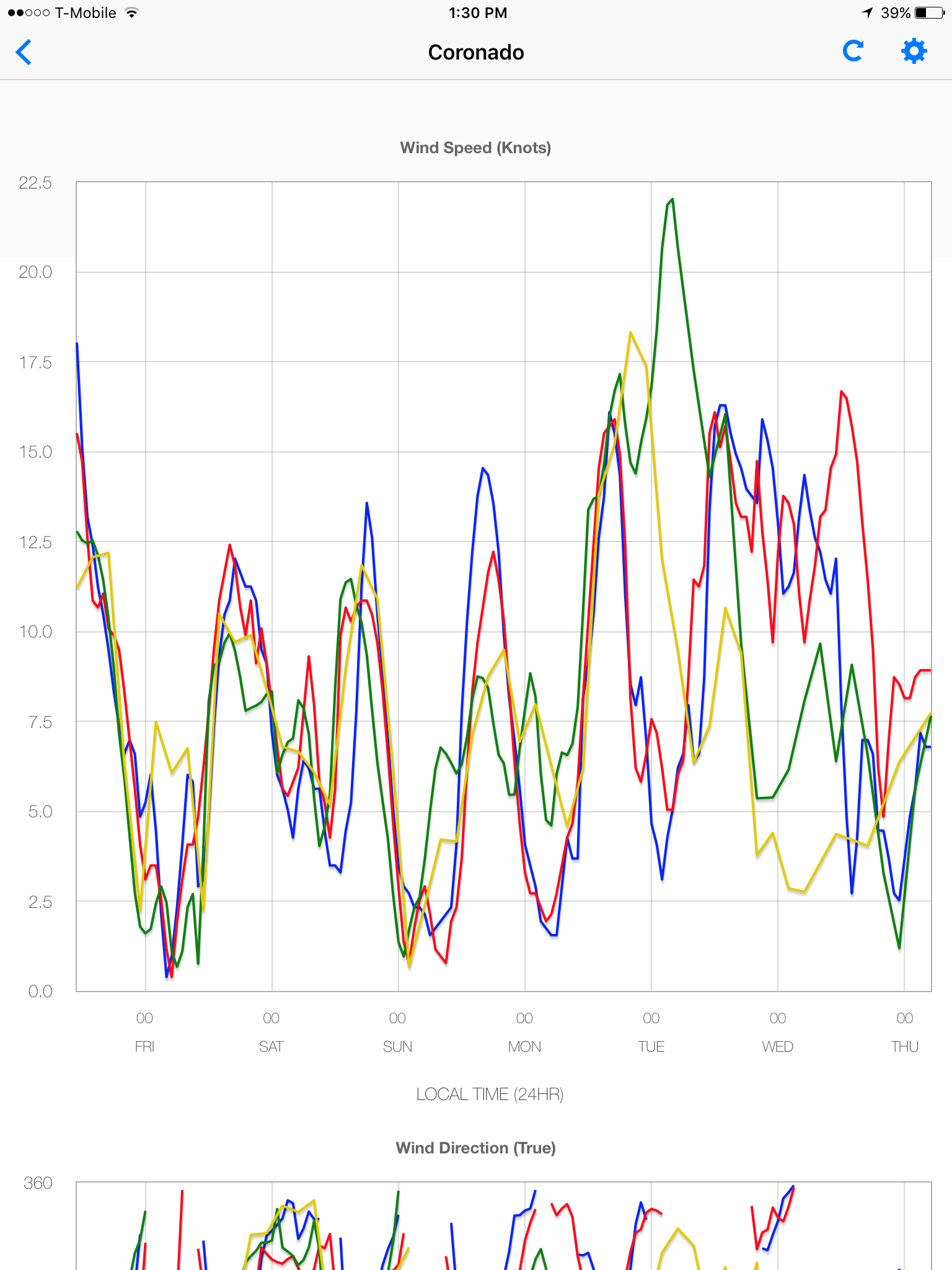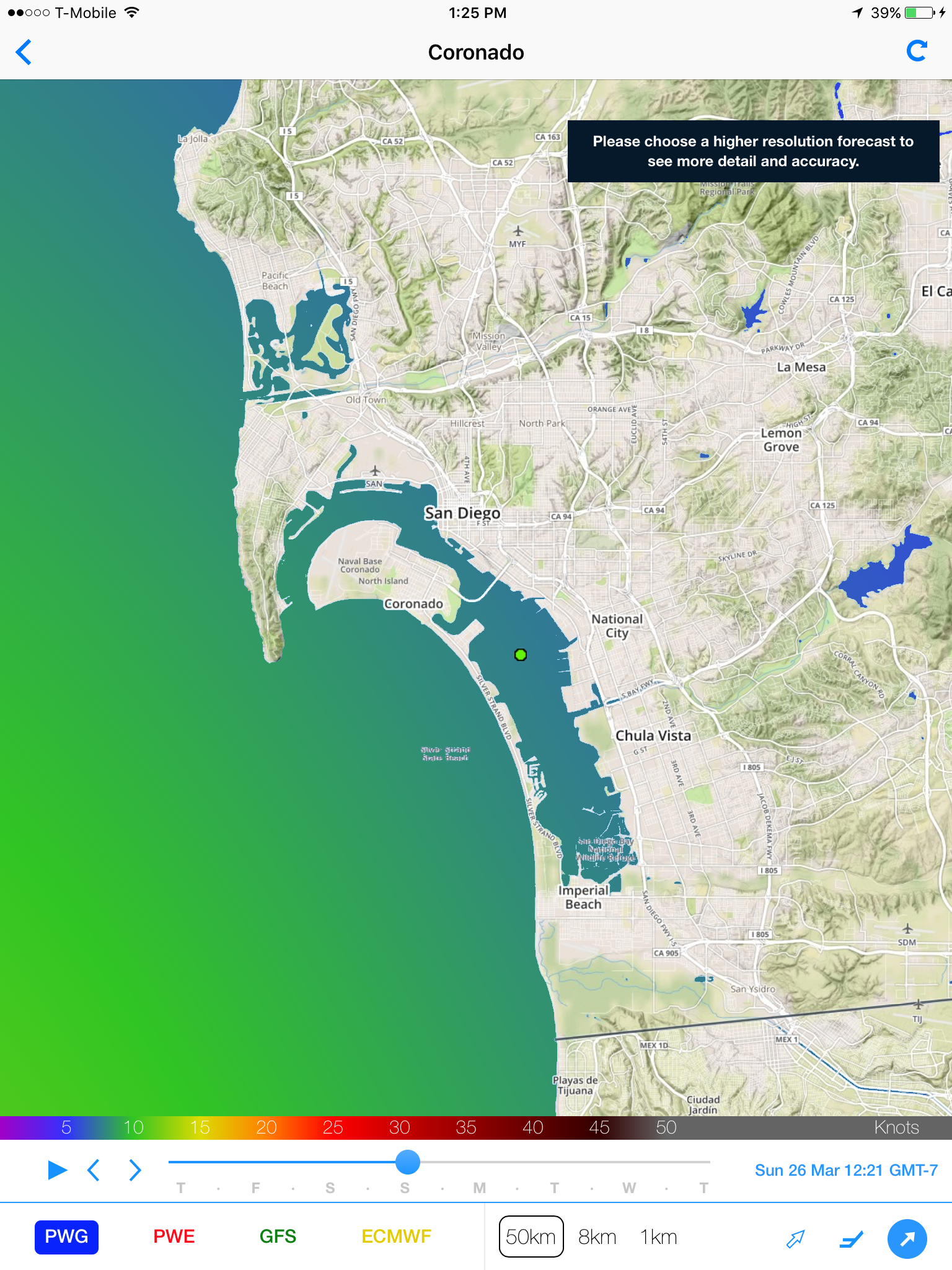By Willie McBride
US Sailing Team Olympic Coach
Wow, what an awesome weekend of racing in Coronado! With 50 boats on the line, this was by far the most competitive 29er fleet that we've had in the US in over a decade, with some really impressive performances, and some very tight competition at the top of the fleet. Right now there are generally two different groups of teams on the race course - those who have the speed and handling to race, and those who need to focus 100% on developing those skills. Usually I focus on aspects of how to sail a 29er well, but because we had such great competition, this debrief will focus mainly on tactics and strategy.
Weather: Build Your Mental Model
Every day when I drove down to the Coronado venue from Point Loma, I drove over the Coronado Bridge, and my mind switched into race mode. Getting to see the race course from high up gives you a great vantage point to start thinking about what the wind is doing, and how the weather will effect the race course for the day. Observing where the light patches are in the morning, where the breeze develops first, how the angle evolves over the course of the morning, what the clouds look like, where the blue sky appears first, etc. can give you a really good idea of what side will pay, later in the day. If you haven't read it yet, go read Wind Strategy right now!
This weekend we saw perfect sea breeze conditions on the first day. Saturday, we saw a fog bank that sat offshore, probably with a warm top, causing the sea breeze to fight with the gradient, and delaying our nice racing conditions. Sunday was more of our normal sea breeze conditions, but with a colder temp on land, and a stronger gradient component from the north, causing a bit of a tricky transition on the water. Along with the Silver Strand geographic effects on the race course - a left bend in the wind as the wind passes over the land - all of these factors played into building a mental model for what the wind was doing. All of this is described in detail in Wind Strategy.
Once you have a mental model of what the wind is doing on the race course, the next step is to start building your strategy.
Strategy: Keep it simple
The first step here is asking yourself whether or not you can predict what the wind is doing. In a few of the races over the weekend, confidence was high, but in other races, the key realization was that you could not predict the wind's behavior, and that it was therefore better to stick to a more conservative, fleet management game plan. In either case, simplicity is the name of the game, and sticking to a simple track based strategy is a good way to keep things simple.
Image from McBride Racing Tactical Playbook
The 5 tracks that I generally ask teams to stick to are:
Tracks 1-4: Inside/outside + right/left - These tracks select the side of the course that you think will ultimately come out ahead, and then select whether you think gains will increase on the edges more quickly than risk. The McBride Racing Tactical Playbook goes into a lot more depth on these, but the bottom line is to select the side you like, and then to choose your level of risk vs. reward on each side.
Track 5: Minimize decisions - I wrote a blog entry on this a while back, that outlines what to do when you're uncertain what the wind will do next. This is more of a fleet management strategy, and was definitely appropriate for a lot of races at the Midwinters.
Once you know your track, the next step is to execute, and adapt to situations that arrise around the course using your tactical playbook.
Tactics: Build Your Playbook
There were so many tactical plays that occurred around the race course this weekend, and I don't have time to get into them all, so if you're interested in really drilling into this, please go buy the McBride Racing Tactical Playbook. A few general observations to help guide your decision making in the future:
1. Use the top middle of the course to survive when your lanes aren't great.
2. Stay on the outside of the diamond at the beginning of the downwind, and the inside in the second half.
3. Center up in the commitment zone, then own your side coming into the leeward mark.









